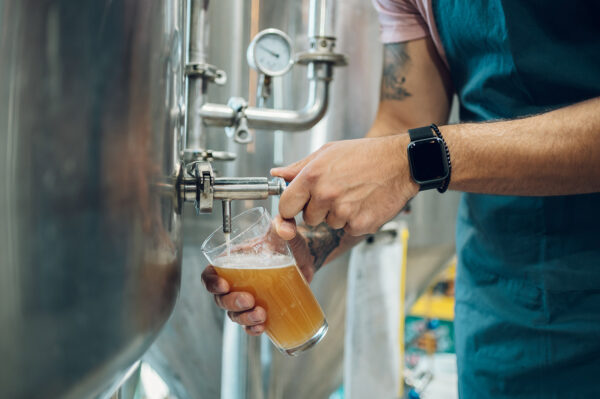As the California Department of Food and Agriculture’s Office of Environmental Farming & Innovation (collectively referred to herein as the “CDFA”) prepares to launch its Cannabis Appellations of Origin Program (the “Cannabis Appellations Program” or the “Program” or “CAP”), stakeholders and industry participants unfamiliar with appellations of origin may be asking themselves why the Cannabis Appellations Program exists in the first place. Future Rogoway Law Group blog posts will address whether licensed cannabis cultivators or the industry at large will actually reap any benefits from the establishment of Cannabis Appellations of Origin, but for now, we will dive into the legal underpinnings of the Cannabis Appellations Program itself.
What is a Cannabis Appellation of Origin?
Before getting into the legal basis for the Cannabis Appellations Program, let’s first briefly discuss what a Cannabis Appellation of Origin (“CAO”) is. A CAO is a protected designation that identifies the geographical origin of a cannabis product and includes production requirements for products grown or made in the geographical region. Ultimately, CAOs will allow licensed cultivators to recognize cannabis growing areas within and beyond county boundaries, and to create specific requirements for how cannabis is grown in those appellations.
Similar to the American Viticultural Areas (“AVA”s) and French Appellations d’origine Controlee (“AOC”s) known in the wine industry, which will be discussed in comparison to California’s CAOs in a future Rogoway Law Group blog, the use of CAOs on cannabis product labeling and marketing materials may be seen by consumers as a badge of perceived quality for such products. Whether Cannabis Appellations of Origin will actually be linked or related to product quality in the future is unclear, however, to avoid any consumer confusion, it will be critical for the CDFA (in conjunction with the DCC) to regulate not only the creation of CAOs but also their use in commerce. As discussed below, the CDFA not only can regulate the CAP, but it is also required to do so.
Legal Basis for California’s Cannabis Appellations of Origin Program
MAUCRSA Mandates the Establishment of an Appellations of Origin Program
The CDFA established the Cannabis Appellations Program in response to the Medical and Adult Use Cannabis Regulation and Safety Act’s (“MAUCRSA”) mandate for it to do so. Specifically, section 26063(b) of MAUCRSA states, in relevant part, that “[n]o later than January 1, 2022, the [California] Department of Food and Agriculture shall establish a process by which licensed cultivators may establish appellations of origin, including standards, practices, and cultivars applicable to cannabis produced in a certain geographical area in California.” Section 26063 of MAUCRSA also lists high level restrictions and requirements for the use of established appellation of origin identifiers in the cannabis marketplace. For instance, MAUCRSA specifically states, among other things, that,
- Cannabis cannot not be advertised, marketed, labeled, or sold using an appellation of origin established by the CDFA, including any similar name that is likely to mislead consumers as to the kind of cannabis, unless the cannabis meets the appellation of origin requirements for, and was produced in, the geographical area; and
- An appellation of origin, including any similar name that is likely to mislead consumers as to the kind of cannabis contained in a product, cannot not be used in the advertising, labeling, marketing, or packaging of a cannabis product unless 100 percent of the cannabis contained in the product meets the appellation of origin requirements and was produced in the geographical area.
Cannabis Appellations of Origin Program Excludes Mixed-Light and Indoor Cultivators
MAUCRSA also states, in section 26063(c), that an appellation of origin can only be approved by the CDFA if “it requires the practice of planting in the ground in the canopy area and excludes the practices of using structures, including a greenhouse, hoop house, glasshouse, conservatory, hothouse, and any similar structure, and any artificial light in the canopy area.” Thus, it appears, perhaps quite obviously so, that neither mixed-light cultivation licensees nor indoor cannabis cultivation licensees will be able to use an appellation of origin as a marketing tool even if their licensed premises fall within the geographical area associated with an established cannabis appellation of origin.
CDFA is the Regulatory Body Developing and Implementing the Program
While MAUCRSA directs the CDFA to create the Cannabis Appellations Program and lists broad overarching restrictions regarding the creation and amendment of cannabis appellations of origin and use of established appellation identifiers in the marketplace, the job of regulating and implementing the Program falls to the CDFA.
Since MAUCRSA went into effect in 2018, the CDFA has held several public workshops to gain stakeholder input and feedback regarding the establishment of the Program. The CDFA used the input from the workshops to draft regulations to govern the creation of Cannabis Appellations within the State of California. As noted on the CDFA’s CAP website, the regulations at issue went through multiple iterations and public comment was solicited and received after each modification, in compliance with California rule making requirements. The final regulations are codified in California Code of Regulations, Title 3, Division 8, Chapter 2.
As noted in Rogoway Law’s original Cannabis Appellations Program blog, California’s Cannabis Appellations Program – August 2022 Update, the existing CAP regulations predominantly address the process of establishing and amending a cannabis appellation in the State of California. While the CDFA has not released regulations or guidance regarding how it will monitor the use of cannabis appellations identifiers in the cannabis marketplace, the language in MAUCRSA indicates that regulatory compliance measures will be taken to ensure established Appellations of Origin are not used as a tool to deceive consumers who may see the use of appellation identifiers as quality indicators.
For more information about the CDFA’s Cannabis Appellations of Origin Program, sign up to receive an email copy of Rogoway Law Group’s newsletter, which will notify you when new publications are posted to Rogoway Law Group’s Legal Insights page.



